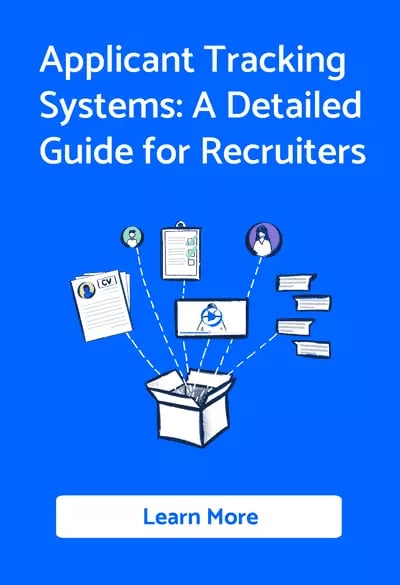In today's competitive job market, attracting top talent is a priority for businesses looking to stay ahead.
According to the Office for National Statistics, the UK employment rate was at 75.5% in 2021, and with the economic recovery underway, that number has only been increasing.
Business leaders must strategically source candidates to attract the best and brightest.
This article will delve into 10 candidate sourcing strategies recruiters can use to maximise their success in finding and securing top talent.
Supported by data and metrics, these strategies will provide valuable insights to help your business thrive.
1. Leverage social media
In a 2021 survey, 73% of millennials reported finding their last job through a social media platform. Social media sites like LinkedIn, Facebook, and Twitter can be powerful tools for sourcing candidates.
Create engaging content and job postings to share on these platforms, and feel free to reach out directly to potential candidates who align with your company's values and requirements. By staying active on social media, you can keep your brand at the forefront of candidates' minds and maintain a pipeline of potential talent.
Additionally, monitor industry-specific groups and forums to identify potential candidates who may not be actively looking for a job but could be interested in your open positions. Engaging with these groups can also help you stay informed about the latest industry trends and developments.
2. Utilise job boards
Job boards such as Indeed, Glassdoor, and Monster are still popular among job seekers, with 82% of job seekers using job boards to find new opportunities in 2021.
These platforms offer numerous benefits to employers, including increased visibility and the ability to target specific demographics.
Invest in premium job listings, optimise your job descriptions, and use relevant keywords to increase visibility and attract the right candidates. By ensuring your postings are detailed and clear, you can improve the quality of applicants and streamline the hiring process.
Additionally, track the performance of your job postings to identify which platforms are most effective in delivering quality candidates. This data-driven approach will help you optimise your candidate sourcing efforts and improve your return on investment.
3. Employee referral programs
Employee referral programs can be an effective way to source high-quality candidates, as your employees already clearly understand your company culture and can recommend candidates who are a good fit.
Data shows that referred candidates are 55% more likely to be hired than those sourced through other methods and have a 45% higher retention rate after two years.
Implement a structured referral program and provide incentives for employees to participate. This can include bonuses, additional time off, or other rewards. By fostering a culture of employee referrals, you can tap into your team's network and access hidden talent.
Regularly communicate the referral program’s success to your employees to further encourage participation. Highlight the impact their referrals have had on the company and celebrate the accomplishments of the referred hires.
4. Inbound recruiting
Inbound recruiting involves creating a strong employer brand and sharing it across various channels to attract candidates. Studies indicate that 75% of job seekers consider a company's brand before applying.
To improve your employer brand, focus on your company's values, culture, and work environment. Share authentic stories and testimonials from your employees on your website and social media channels.
By offering a transparent view of your company culture, you can attract candidates who are a great fit for your organisation.
Invest in content marketing and search engine optimisation (SEO) to increase your online presence and drive organic traffic to your career site. High-quality, informative content that showcases your company culture and values will help you stand out from your competitors and appeal to potential candidates.
5. Collaborate with universities
Partnerships with universities and colleges can be a great source of fresh talent. By participating in campus recruitment events, job fairs, and offering internships or apprenticeships, you can access a diverse pool of highly motivated candidates.
According to a 2021 survey, 72% of employers said their college recruiting efforts resulted in successful hires. Engage with university career centres and academic departments to establish relationships that can lead to a steady stream of qualified candidates.
Developing long-term relationships with educational institutions can also help you stay updated on your industry’s latest research and innovations.
Consider partnering with universities to sponsor research projects or offer guest lectures, further solidifying your connection to the academic community.
6. Networking events
Networking events, including industry-specific conferences and meetups, allow connecting with potential candidates in person. A 2021 study found that 85% of all jobs are filled through networking.
By actively participating in these events, you can expand your professional network and increase the chances of finding the right candidate for your organisation. Additionally, consider hosting your own networking events or workshops to position your company as a thought leader in your industry.
Remember to follow up with the connections you make at these events. Send personalised messages or connect on social media to nurture these relationships and keep your company in mind when new opportunities arise.
7. Passive candidate sourcing
Passive candidates are those not actively looking for a job but may be open to new opportunities. Research indicates that passive candidates comprise 70% of the workforce, so tapping into this talent pool can give you access to highly skilled professionals.
Use platforms like LinkedIn to identify passive candidates who match your requirements and reach out to them with personalised messages. Highlight the unique aspects of your company culture and the potential growth opportunities within your organisation to pique their interest.
To further engage passive candidates, consider hosting webinars or other virtual events that showcase your company's expertise and values. This will help build your brand and create a sense of community among potential candidates.
8. Niche job boards and professional associations
Niche job boards and professional associations cater to specific industries or job roles, helping you target highly specialised candidates. A 2021 survey revealed that 62% of employers successfully sourced candidates from niche job boards.
Identify your industry’s most relevant boards and associations and use them to advertise your job openings.
Targeting specialised platforms increases the likelihood of finding candidates with the specific skill sets you need.
Additionally, participate in industry-specific forums and online communities to expand your network and gain insights into the needs and priorities of your target candidates.
9. Recruitment agencies and headhunters
Recruitment agencies and headhunters can help you find and secure top talent quickly and efficiently. These professionals have extensive networks and industry knowledge, allowing them to identify and engage with the most qualified candidates.
While partnering with a recruitment agency may come at a cost, the investment can be worth it if it results in a successful hire. A 2021 study found that 46% of employers who used recruitment agencies experienced faster time-to-hire and a higher quality of candidates.
To maximise the effectiveness of this candidate sourcing strategy, communicate your company's culture, values, and expectations clearly to your recruitment partner. This will ensure they can accurately represent your organisation and attract the right talent.
10. Applicant tracking systems (ATS)
An Applicant Tracking System (ATS) is a software tool that can streamline your recruitment process by automating tasks, tracking candidate progress, and storing candidate information. According to a 2021 study, 86% of companies use an ATS to optimise their recruitment process.
By implementing an ATS, you can efficiently manage your candidate pool and ensure no potential talent slips through the cracks. In addition to automating tasks, such as posting job ads and screening resumes, an ATS can provide valuable data and analytics to help refine your candidate sourcing strategies.
When selecting an ATS, consider features such as integration capabilities, user-friendliness, and customisation options. This will ensure the system meets your organisation's unique needs and contributes to a more effective recruitment process.
Let’s wrap up 10 proven candidate sourcing strategies
With the ever-changing job market landscape, business leaders must remain agile and innovative in their candidate sourcing strategies.
By leveraging social media, utilising job boards, implementing employee referral programs, and exploring the other strategies discussed in this article, recruiters can enhance their ability to attract and retain top talent.
As businesses adapt to an increasingly competitive environment, investing in data-driven recruitment strategies that deliver results is crucial.
Organisations can position themselves for long-term success and growth in today’s dynamic business landscape by prioritising candidate sourcing and staying informed about the latest trends and best practices.






